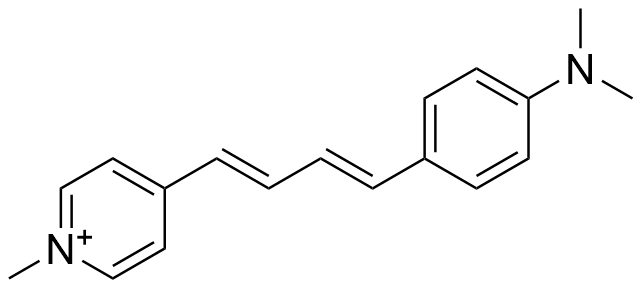Binding Properties
| 𝜈 | Molecule 1 : 1 Host | ||
| Ka = | 4.10⋅109 | ± 1.00⋅105 | M-1 |
| Kd = | |||
| logKa = | |||
| T | 25.0 °C | ||
| Energy | kJ mol-1 | kcal mol-1 | |||
|---|---|---|---|---|---|
| ΔG | = | -54.87 | ± 0.0 | -13.11 | ± 0.0 |
| ΔH | = | -11.84 | -2.83 | ||
| -TΔS | = | -43.011 | -10.28 | ||
| J mol-1 K-1 | cal mol-1 K-1 | ||||
| ΔS | = | 144.3 | 34.5 | ||
These are the specifications of the determination of the experimental results.
| Detection Method: | Direct | ||
| Assay Type: | Associative Binding Assay | ||
| Technique: | Isothermal Titration Calorimetry | ||
| Molecule: | syringe | ||
| Partner: | syringe | ||
| Cofactor: | syringe | ||
Detailed information about the solvation.
| Solvent System | Complex Mixture | |
| Solvents | water | 100.0 % |
| Additives | hydrochloric acid | |
| Sodium hydroxide | ||
| pH | 9.5 | |
| Solubility | 2.0 mM |
Please find here information about the dataset this interaction is part of.
| Citation: |
R. Khurana, J. Mohanty, A. K. Vasu, S. Kanvah, SupraBank 2026, pH-responsive molecular assemblies of pyridylbutadiene derivative with cucurbit[7]uril (dataset). https://doi.org/10.34804/supra.20210928298 |
| Link: | https://doi.org/10.34804/supra.20210928298 |
| Export: | BibTex | RIS | EndNote |
Please find here information about the scholarly article describing the results derived from that data.
| Citation: |
A. K. Vasu, R. Khurana, J. Mohanty, S. Kanvah, RSC Adv. 2018, 8, 16738–16745. |
| Link: | https://doi.org/10.1039/c8ra03355b |
| Export: | BibTex | RIS | EndNote | |
Binding Isotherm Simulations
The plot depicts the binding isotherm simulation of a 1:1 interaction of 4-((1E,3E)-4-(4-(dimethylamino)phenyl)buta-1,3-dien-1-yl)-1-methylpyridin-1-ium (4.878048780487805e-09 M) and CB7 (0 — 9.75609756097561e-09 M).
Please sign in: customize the simulation by signing in to the SupraBank.




